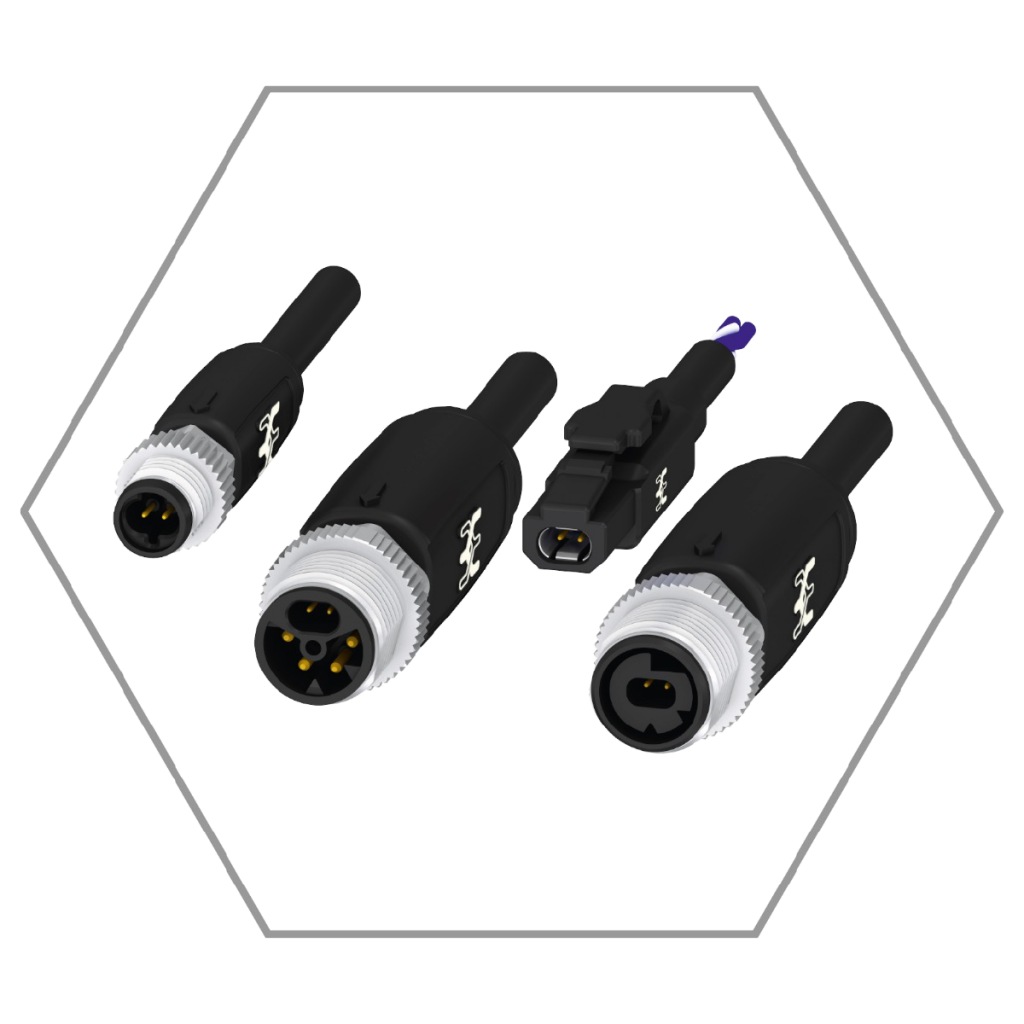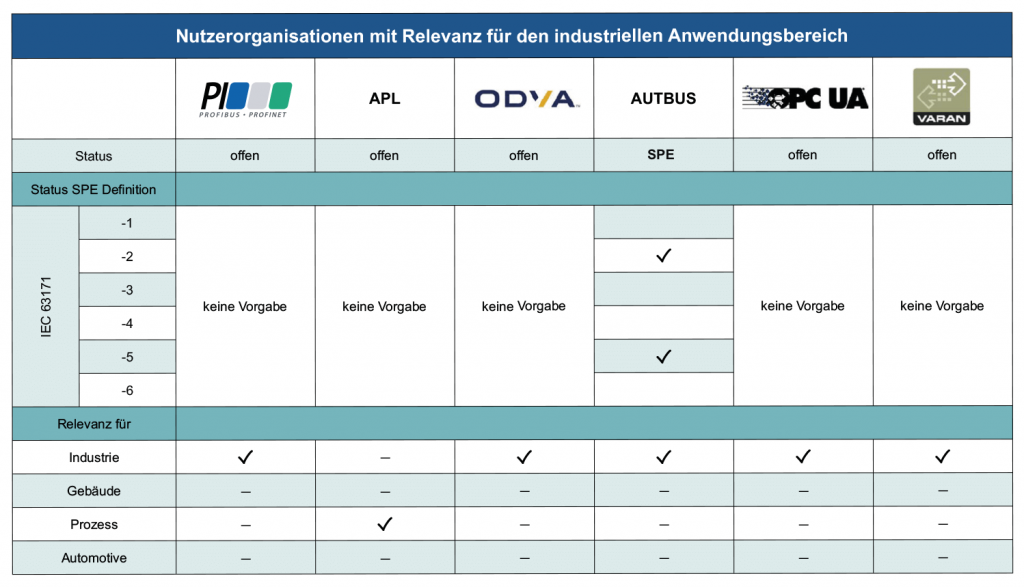The Technology – Standardization
WHY DOES IT MAKE SENSE TO STANDARDIZE CONNECTOR SYSTEMS IN SINGLE PAIR ETHERNET?
The Technology – Standardization
WARUM IST EINE NORMIERUNG VON SPE-STECKSYSTEMEN SINNVOLL?
International standards are indispensable for the development of Industry 4.0 and IoT applications. They form the basis for globally functioning Ethernet networks.
For smooth digital Ethernet communication or applications with Power over Data Line (PoDL), a wide variety of standards must be optimally coordinated. Standardization is also required in the SPE environment to provide users with the security of intercompatibility between a wide variety of systems in a consistent Ethernet network. Especially the plug-in systems have to be adjusted to all parameters of the protocol level.
Of great importance for the further development of Single Pair Ethernet (SPE) is the introduction of a unified connector design. This enables a wide range of applications, from control cabinets to the field and hybrid installations.
The PROFIBUS & PROFINET International (PI) automation community, with over 1,800 members, including many companies from the Single Pair Ethernet System Alliance, presented a uniform mating face for SPE at SPS 2024 and submitted it for international standardization. As a pioneer of open technologies such as PROFIBUS and PROFINET, PI drives market-leading standards for all areas of industrial production. The agreement on a SPE mating face is a crucial milestone towards future-proof communication.
Numerous manufacturers have signalled their support and are actively driving implementation.

Why commit to a common SPE standard now?
The new standard IEC 63171-7 enables seamless networking, increases efficiency, and reduces costs in the long term. At the same time, user-friendliness is improved, which further increases the acceptance of the technology.
If a plug-in system is only considered at the end of a technological development, drastic limitations in performance are to be feared. For example, the influences of the connector system on the signal quality or the maximum cable length could be disregarded. Advantages of the new technology would thus be curtailed right at the beginning. The overarching cooperation of as many system participants as possible in the run-up to standardization is crucial in the definition of connectors.

“We are delighted about the strong commitment of the PROFIBUS & PROFINET International (PI) automation community and the planned inclusion of SPE in the PNO guidelines. A further step towards a consistently networked future!”

Simon Seereiner, Business Development Manager at the Weidmüller Group
Which areas play an important role within standardization?
The specifications that a connector system must meet are defined in common standards such as IEEE or ISO/IEC. They include mechanical specifications, such as tolerances and dimensions, as well as environmental operations and necessary tests. In addition, there are the electrical specifications. They require tuning of a wide range of parameters. This applies in particular to data or signal transmission, which already begins with the processor and runs through the printed circuit board to the various components. Here, standardizations ensure the entire connection of passive and active components and enable the fulfillment of all requirements.
What is the current status of standardization?
At the close of 2024, he PROFIBUS & PROFINET International (PI) automation community presented a uniform mating face for SPE at SPS 2024 and submitted it for international standardization. As a pioneer of open technologies such as PROFIBUS and PROFINET, PI drives market-leading standards for all areas of industrial production. The agreement on a SPE mating face is a crucial milestone towards future-proof communication.
Additionally, standardization work is ongoing at other levels of SPE communication, such as a power concept, to achieve a comprehensive SPE solution across all layers.
This solution will be applicable to all Single Pair Ethernet applications through the use of international standards – and will also enable higher transmission speeds.
What role do user organizations play in the standardization process?
IEC standardization is a first step in the establishment of new connector systems. In general, however, a mating face will not achieve market relevance even with international standardization. This is often due to national and international user organizations such as PROFINET. In terms of the application, you decide which system to use.
For users of PROFINET systems, there is now clarity; the decision of other user organizations remains to be seen.
Has the market already agreed on a mating face?
With its commitment to a standardizised mating face, PI is strengthening the key role of SPE in industrial communication. The technology offers enormous potential, especially for cost-efficient and powerful networking of devices and sensors. This not only drives miniaturization but also paves the way for innovative applications.
Thanks to the commitment of PI, its members, and the global PROFINET community, industrial communication is becoming clearer, more efficient, and future-proof.
Other important user organizations, such as ODVA, are currently deliberating on connector standards. They will continue to engage intensively in this area, leveraging all available expertise and the latest information.
